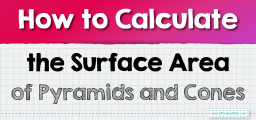Unlocking the Secrets of Triangle Angle Sum
[include_netrun_products_block from-products="product/6-south-carolina-sc-ready-grade-3-math-practice-tests/" product-list-class="bundle-products float-left" product-item-class="float-left" product-item-image-container-class="p-0 float-left" product-item-image-container-size="col-2" product-item-image-container-custom-style="" product-item-container-size="" product-item-add-to-cart-class="btn-accent btn-purchase-ajax" product-item-button-custom-url="{{url}}/?ajax-add-to-cart={{id}}" product-item-button-custom-url-if-not-salable="{{productUrl}} product-item-container-class="" product-item-element-order="image,title,purchase,price" product-item-title-size="" product-item-title-wrapper-size="col-10" product-item-title-tag="h3" product-item-title-class="mt-0" product-item-title-wrapper-class="float-left pr-0" product-item-price-size="" product-item-purchase-size="" product-item-purchase-wrapper-size="" product-item-price-wrapper-class="pr-0 float-left" product-item-price-wrapper-size="col-10" product-item-read-more-text="" product-item-add-to-cart-text="" product-item-add-to-cart-custom-attribute="title='Purchase this book with single click'" product-item-thumbnail-size="290-380" show-details="false" show-excerpt="false" paginate="false" lazy-load="true"]

Step-by-step Guide: Triangle Angle Sum
The Triangle Angle Sum Theorem:
The Triangle Angle Sum Theorem states that the sum of the interior angles of any triangle is always \(180^\circ\).
Proof:
- Take a triangle \(ABC\).
- Draw a line \(DE\) parallel to side \(AC\) through vertex \(B\).
- Angle \(A\) is congruent to angle \(DBA\) because they are corresponding angles (due to the parallel lines).
- Angle \(C\) is congruent to angle \(BCD\) for the same reason.
Adding the angles of triangle \(ABC\):
\(\angle A + \angle B + \angle C = \angle DBA + \angle ABC + \angle BCD\)
Given that a straight line has an angle of \(180^\circ\), we have:
\(\angle DBA + \angle ABC + \angle BCD = 180^\circ\)
Thus, \(\angle A + \angle B + \angle C = 180^\circ\)
Examples
Example 1:
Given a triangle \(PQR\) with angles \(P = 60^\circ\), \(Q = 50^\circ\), find angle \(R\).
Solution:
Using the Triangle Angle Sum theorem:
\(\angle P + \angle Q + \angle R = 180^\circ\)
Substitute the given values:
\(60^\circ + 50^\circ + \angle R = 180^\circ\)
Adding the angles together:
\(\angle R = 180^\circ – 110^\circ\)
\(\angle R = 70^\circ\)
Example 2:
In triangle \(XYZ\), if angle \(X\) is twice angle \(Y\) and angle \(Z\) is \(40^\circ\), find the angles \(X\) and (Y).
Solution:
Let \( \angle Y = a^\circ \)
Therefore, \( \angle X = 2a^\circ \)
Using the Triangle Angle Sum theorem:
\(a^\circ + 2a^\circ + 40^\circ = 180^\circ\)
Combine like terms:
\(3a^\circ + 40^\circ = 180^\circ\)
Subtract 40 from both sides:
\(3a^\circ = 140^\circ\)
Divide both sides by \(3\):
\(a^\circ = \frac{140}{3}\)
\(a^\circ = 46.67^\circ\)
So, \( \angle Y = 46.67^\circ \) and \( \angle X = 93.34^\circ\).
Practice Questions:
- If two angles of a triangle are \(70^\circ\) and \(45^\circ\), find the third angle.
- In triangle \(DEF\), angle \(D\) is half the size of angle \(E\) and angle \(F\) is \(60^\circ\). Calculate the angles \(D\) and \(E\).
- A triangle has angles in the ratio 2:3:5. What are the angles?
Answers:
- \(65^\circ\)
- \(D = 40^\circ\), \(E = 80^\circ\)
- \(40^\circ\), \(60^\circ\), \(80^\circ\)
Related to This Article
More math articles
- Top 10 6th Grade MEAP Math Practice Questions
- Absolute vs Conditional Convergence: Key Differences Explained
- What to Consider when Retaking the ACT or SAT?
- How to Solve Two-variable Linear Equations Word Problems
- 7th Grade SC Ready Math Worksheets: FREE & Printable
- The Ultimate 7th Grade GMAS Math Course (+FREE Worksheets)
- Quick Quotient Queries: How to Estimate Division in Real-World Scenarios
- How to Graph Proportional Relationships and Find the Slope
- Introduction to Sequences and Series: Fundamentals, Types, and Applications
- Discover the Solutions: “ASTB Math for Beginners” Complete Solution Manual



























What people say about "Unlocking the Secrets of Triangle Angle Sum - Effortless Math: We Help Students Learn to LOVE Mathematics"?
No one replied yet.